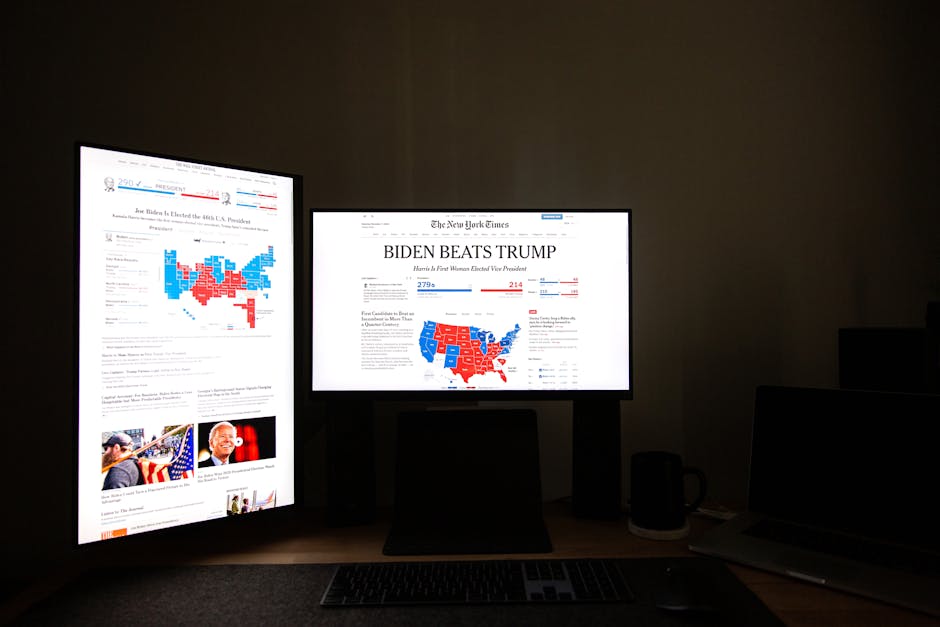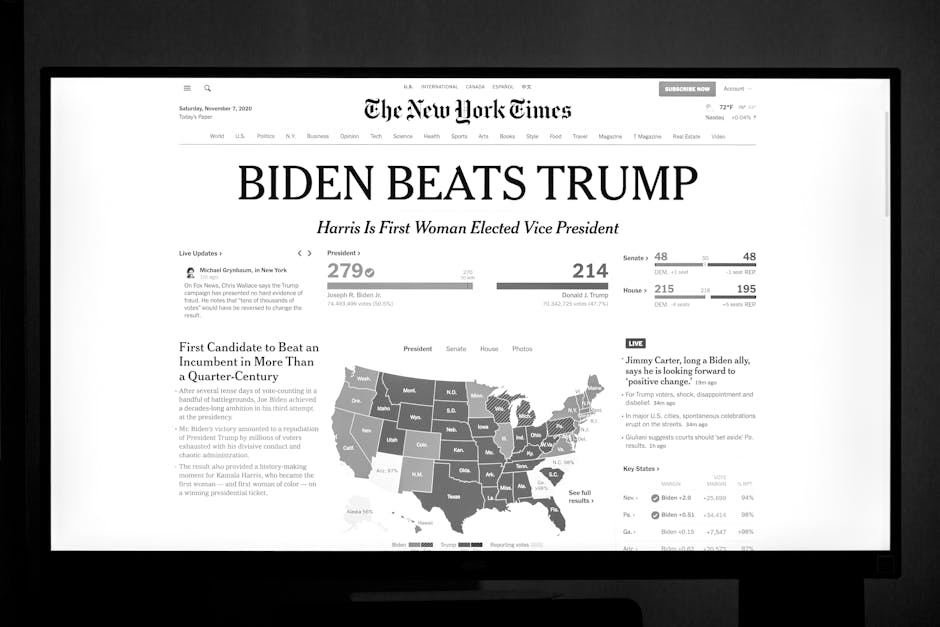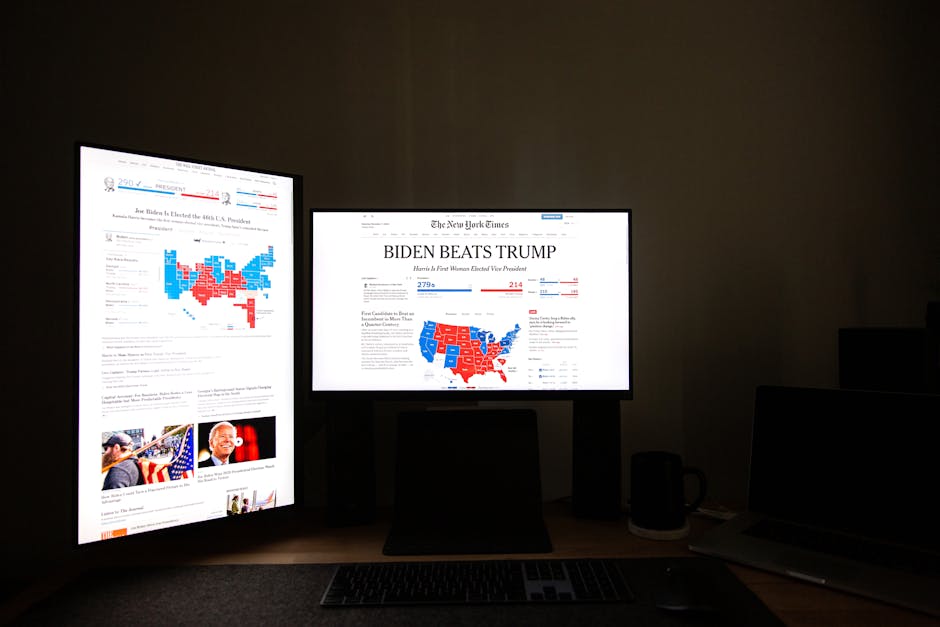Decoding Election News: A Comprehensive Guide to Navigating the Political Landscape
Elections are the cornerstone of democracy, shaping our laws, policies, and ultimately, our futures. Understanding election news, however, can be a daunting task. The sheer volume of information, the often-conflicting narratives, and the inherent biases present in various media outlets can leave even the most engaged citizen feeling overwhelmed. This comprehensive guide aims to equip you with the tools and knowledge necessary to navigate the complex world of election news effectively and critically.

Understanding the News Cycle
The election news cycle is a dynamic beast, constantly shifting and evolving. Understanding its rhythm is crucial to absorbing information effectively. From primary campaigns to general elections, the flow of information accelerates and decelerates, dictated by events, debates, and media coverage. Early stages might focus on candidate announcements and platform building, while the final stretch before voting day is a whirlwind of polls, debates, and last-minute endorsements.

Identifying Key Stages of an Election Cycle
- Primary Elections: Candidates within a party compete to secure the nomination. This stage often features intense debates and a focus on ideological differences.
- Conventions: Political parties formally nominate their candidates and outline their platforms. These events are often saturated with media coverage and symbolic significance.
- General Election Campaigning: The nominated candidates from different parties campaign across the country, engaging in debates, rallies, and advertising.
- Election Day: Citizens cast their votes, and the results begin to roll in. This is often a period of high anxiety and uncertainty.
- Post-Election Analysis: Experts and commentators analyze the results, dissecting the outcomes and their implications for the future.
Identifying Bias and Misinformation
One of the most significant challenges in navigating election news is identifying bias and misinformation. Many sources present information with a particular slant, either consciously or unconsciously. Misinformation, on the other hand, is the deliberate spread of false or misleading information.
Recognizing Biases in Media Coverage
- Source Identification: Determine the source’s reputation and known biases. Does it lean left, right, or center? Is it known for factual reporting or opinion pieces?
- Word Choice and Tone: Observe the language used. Does it use emotionally charged words or present information objectively?
- Fact-Checking: Cross-reference information with multiple sources. If a claim appears only in one source, treat it with skepticism.
- Hidden Agendas: Consider the source’s potential motivations. Is there a financial or political interest influencing their reporting?
Utilizing Reliable Sources of Election News
Finding credible sources is paramount. Relying solely on social media or partisan websites can lead to a skewed and incomplete understanding of events. Instead, prioritize established news organizations with a reputation for accuracy and journalistic integrity.

Examples of Reliable News Outlets
While the concept of objectivity is constantly debated, some outlets consistently strive for factual accuracy and transparency. Examples may include (but are not limited to) Associated Press (AP), Reuters, BBC News, and reputable national newspapers with a history of balanced reporting. It’s important to diversify your sources and compare reporting from different outlets to gain a holistic understanding.
Understanding Different Types of Election News Coverage
Election news isn’t monolithic. It encompasses a variety of formats, each serving a distinct purpose.
Types of Election News Coverage
- Hard News: Factual reporting on events, policy proposals, and candidate statements.
- Analysis: Commentary and interpretation of events and their significance.
- Opinion Pieces: Articles expressing individual or organizational viewpoints.
- Polls and Surveys: Data-driven assessments of public opinion regarding candidates and issues.
- Interviews and Debates: Direct engagement with candidates, allowing for their perspectives to be presented.
- Social Media Coverage: While often unreliable, social media can offer insights into public sentiment and grassroots movements.
The Role of Fact-Checking and Media Literacy
In the age of misinformation, fact-checking websites and a strong foundation in media literacy are indispensable. Fact-checking websites dedicate themselves to verifying the accuracy of claims made by politicians, news outlets, and individuals. Media literacy involves developing the critical thinking skills needed to analyze information sources and assess their reliability.
Developing Media Literacy Skills
- Evaluate the Source: Identify the author, publisher, and any potential biases.
- Consider the Evidence: Is the information supported by credible evidence and sources?
- Check for Consistency: Does the information align with information from other reliable sources?
- Identify Logical Fallacies: Beware of manipulative arguments or unsupported claims.
- Be Aware of Your Own Biases: Acknowledge your preconceived notions and actively seek diverse perspectives.
Engaging Critically with Election News
Ultimately, navigating election news requires active participation and critical engagement. Don’t passively consume information; question it, analyze it, and compare it with other sources. Develop your media literacy skills and become an informed and engaged citizen.
Tips for Critical Engagement
- Diversify Your News Sources: Don’t rely on a single outlet; seek out a range of perspectives.
- Engage in Informed Discussions: Discuss election news with friends, family, and colleagues, but remain respectful of differing viewpoints.
- Verify Information: Don’t share information until you’ve verified its accuracy.
- Be Skeptical: Approach claims with healthy skepticism, especially those that align with your existing beliefs.
- Stay Informed: Continuous learning and information gathering are essential for informed participation in a democracy.

